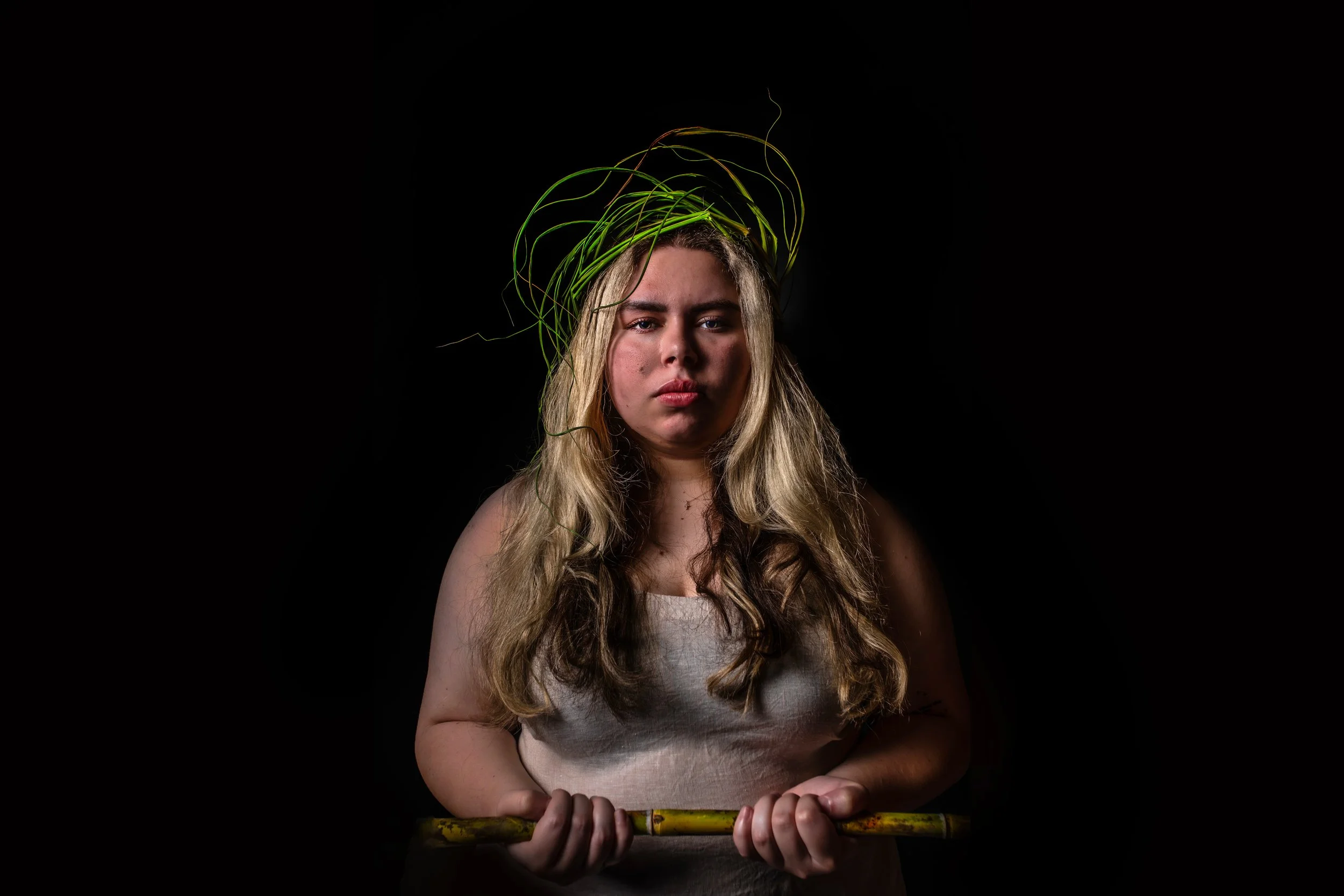
an exploration of the intricate layers of cultural identity
This photographic series is an exploration of the intricate layers of cultural identity. Each student from the CAIA program participates in the Back to Country course, which is designed to deepen their understanding of their connections to cultural heritage and family history. This immersive experience encourages participants to reflect on their roots, connect with their community, and explore the significance of their ancestral lands.
Thompson emphasises the vital importance of this relationship, highlighting how it deeply affects First Nations individuals as they honour their heritage and reclaim their narratives. By actively engaging with their history, participants can develop a renewed sense of belonging and identity.
The series serves as a celebration of identity, memory, and the transformative power of storytelling. Thompson invites viewers to reflect on their connections to culture and heritage, fostering a broader dialogue about the complexities of identity in contemporary society and the ongoing journey of reclamation.
Leah has a connection to the Nywaigi mob from Ingham, Townsville. She focuses on the rich histories of First Nations and South Sea Islanders, weaving together family stories and significant moments in time to illuminate the narratives that shape her identity. Returning to the sugar cane station that her family owns was a transformative journey, deepening her bond with her heritage and ancestors. Leahs gaze is driven by a desire to show the strength and resilience of her people, commemorating their enduring spirit and cultural legacy. Leah aims to inspire others to recognise and appreciate the many stories that define her community.
Beth is a descendant of the Wulli Wulli people of the North Burnett region. They started their studies with limited connections to this heritage which drove their research. Through multiple visits to their ancestral lands, Beth has developed deep ties with both the community and the environment. With the use of ochres collected from their land they express the reclamation of their familial heritage, capturing the profound connection established with the land and transforming personal history into a powerful narrative that speaks to themes of identity and belonging.
Sarah is connected to the Migunberri people of Mount Barney, with a bond to the Logan River, where her great-great-great-grandmother was born. Draped in a paperbark, which is local to the area, Sarah embodies the protection and strength imparted by her matriarchs and ancestors. For thousands of years, the paperbark tree has held immense material and cultural significance, providing essential resources for shelters, canoes, and more. By wearing this cloak, Sarah not only honours her heritage but also reflects her own enduring legacy of motherhood, weaving the stories of her ancestors into the fabric of her identity.
Chelsea has ancestral ties to the Wagiman, Larrakia, and Yanyuwa language groups from the Northern Territory, connecting them to both fresh and saltwater Country, including their great-grandmother's birthplace in Borroloola. The Daly River, rich with important Songlines, serves as a vital resource for the community, providing nourishment and sacred birthing sites. The fluidity of water mirrors Chelsea's own identity as they navigate their Aboriginal and gender identities, choosing to walk between worlds and heal from displacement. The portrait, as they see it, represents a form of rebirth, washing away their anxieties about how they are perceived.



